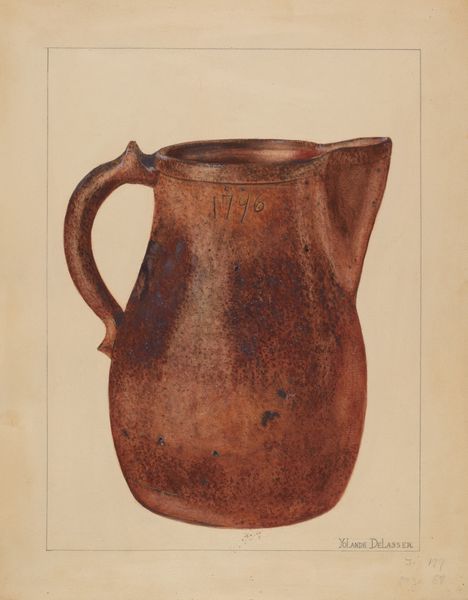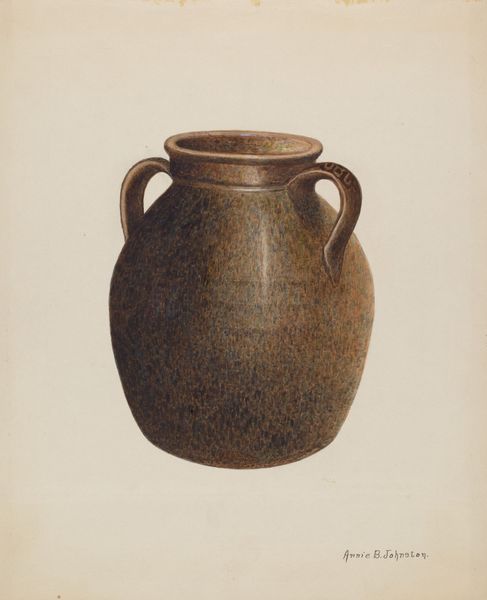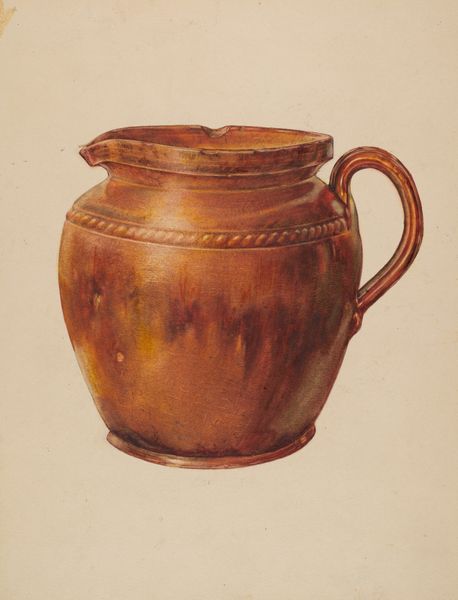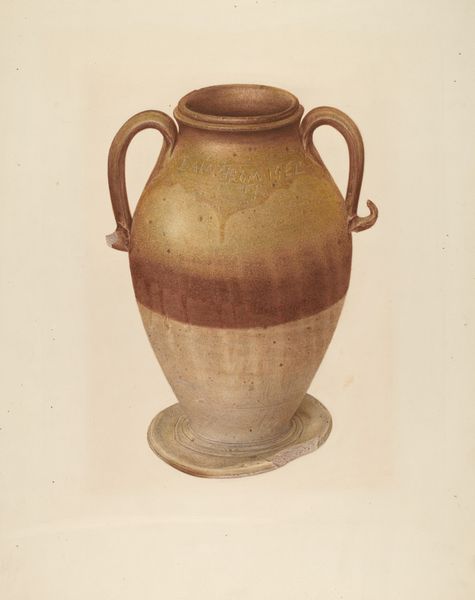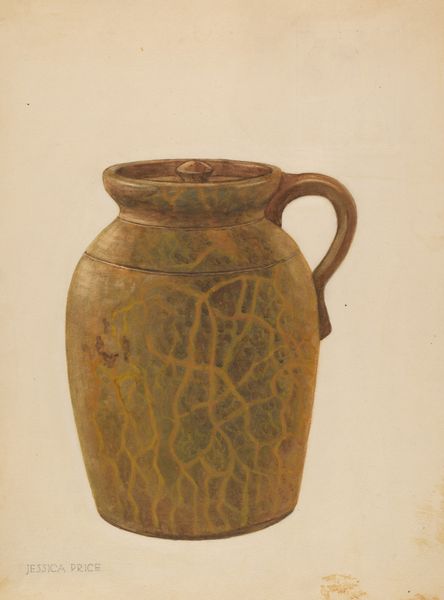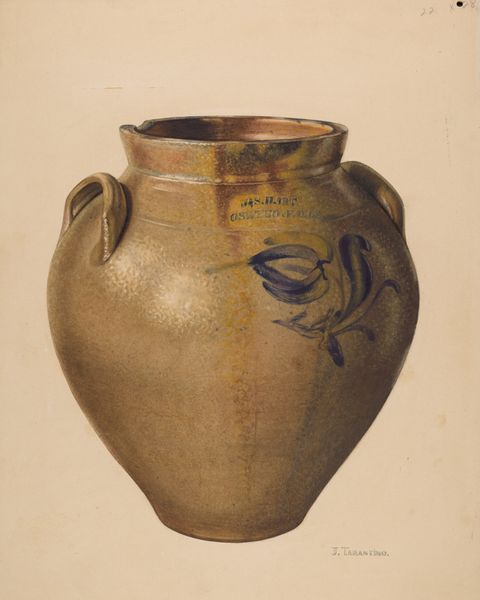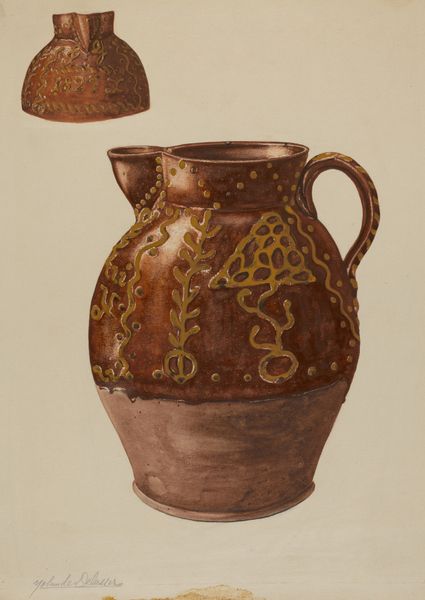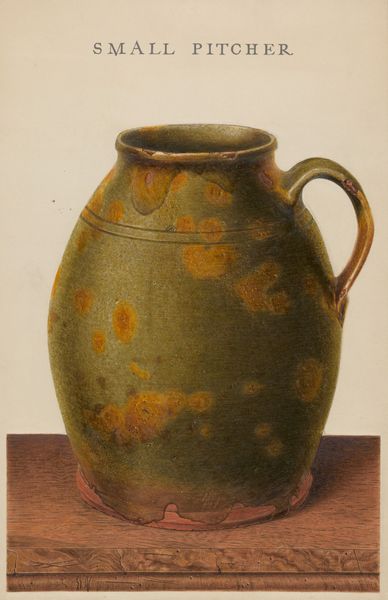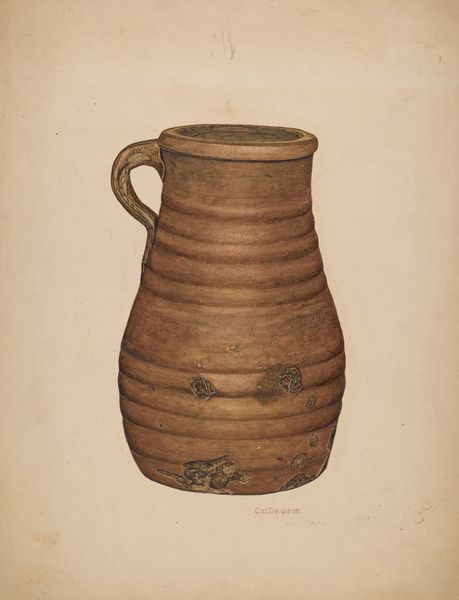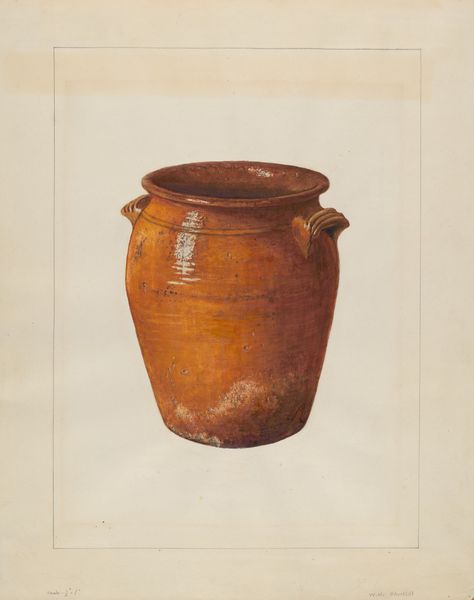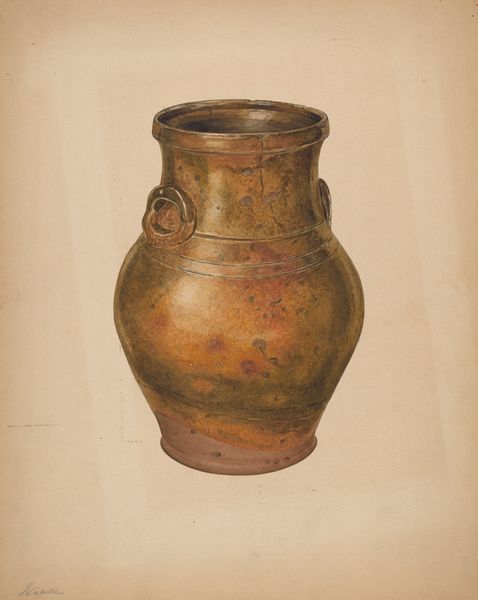
drawing, painting, watercolor
#
drawing
#
painting
#
form
#
oil painting
#
watercolor
#
realism
Dimensions: overall: 21.1 x 13.5 cm (8 5/16 x 5 5/16 in.) Original IAD Object: 5 1/2" High
Copyright: National Gallery of Art: CC0 1.0
Curator: This watercolor and oil painting, known as "Creamer," is attributed to John Matulis, around 1938. What's your initial reaction to this piece? Editor: There's a quiet intimacy here, almost melancholic. The earthy tones and visible brushstrokes give it a sense of groundedness. It looks like something used daily and then captured later on paper, preserving that mundane usage for future consideration. Curator: It's fascinating how the ordinary object gains significance through artistic representation. I see "Creamer" as an interesting document that highlights the intersection between domestic life and the drive towards representation. Its realism really centers lived experiences and makes those commonplace activities—that object—important. Editor: Absolutely. For me, the way Matulis has rendered the clay, you can almost feel the texture. It really pushes this beyond just "Creamer" into a comment about the beauty and utility of hand-crafted objects. Notice how carefully they depict the ridges around the base and handle— it makes me consider labor as part of art, especially during this historical moment. It also brings up questions: who fired this cream pitcher? For what use was it created? For what kind of life was it an important fixture? Curator: Right. The handle—a deep, lustrous umber—stands out against the warm tan and red of the vessel. Thinking about the domestic sphere at the time, representations like this arguably validated the cultural and economic roles of the object as it existed within households. Editor: The interplay of watercolors and oils is curious; you’ve got that transparent wash against heavier applications of paint, which I imagine emphasizes areas receiving wear. How do you interpret this stylistic rendering as it informs that 1930s time frame? It feels rather modern for the era and certainly a choice. Curator: Good eye—It shows a blend of traditional realism with some emerging modernist tendencies, blurring distinctions that would traditionally reinforce social stratifications in art. That is, “fine” versus "functional" art becomes less legible as a descriptor. Editor: Agreed. Its humble subject and artful production force one to consider craft and context—labor and representation. Thank you for exploring this piece with me. Curator: Indeed, it gives us pause to reflect on the daily encounters of people and their art!
Comments
No comments
Be the first to comment and join the conversation on the ultimate creative platform.
